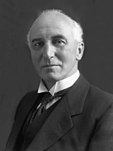
Back যুক্তরাজ্যের সাধারণ নির্বাচন, ১৯৩৫ Bengali/Bangla Všeobecné volby ve Spojeném království 1935 Czech Etholiad cyffredinol y Deyrnas Unedig yng Nghymru, 1935 Welsh Britische Unterhauswahl 1935 German Elecciones generales del Reino Unido de 1935 Spanish Élections générales britanniques de 1935 French הבחירות הכלליות בבריטניה 1935 HE Elezioni generali nel Regno Unito del 1935 Italian 1935年イギリス総選挙 Japanese 1935년 영국 총선 Korean
| ||||||||||||||||||||||||||||||||||||||||||||||||||||||||||||||||||||||||||||||||||||||||||||||||
All 615 seats in the House of Commons 308 seats needed for a majority | ||||||||||||||||||||||||||||||||||||||||||||||||||||||||||||||||||||||||||||||||||||||||||||||||
|---|---|---|---|---|---|---|---|---|---|---|---|---|---|---|---|---|---|---|---|---|---|---|---|---|---|---|---|---|---|---|---|---|---|---|---|---|---|---|---|---|---|---|---|---|---|---|---|---|---|---|---|---|---|---|---|---|---|---|---|---|---|---|---|---|---|---|---|---|---|---|---|---|---|---|---|---|---|---|---|---|---|---|---|---|---|---|---|---|---|---|---|---|---|---|---|---|
| Turnout | 71.1% ( | |||||||||||||||||||||||||||||||||||||||||||||||||||||||||||||||||||||||||||||||||||||||||||||||
| ||||||||||||||||||||||||||||||||||||||||||||||||||||||||||||||||||||||||||||||||||||||||||||||||
 Colours denote the winning party—as shown in § Results | ||||||||||||||||||||||||||||||||||||||||||||||||||||||||||||||||||||||||||||||||||||||||||||||||
 Composition of the House of Commons after the election | ||||||||||||||||||||||||||||||||||||||||||||||||||||||||||||||||||||||||||||||||||||||||||||||||
| ||||||||||||||||||||||||||||||||||||||||||||||||||||||||||||||||||||||||||||||||||||||||||||||||
The 1935 United Kingdom general election was held on Thursday 14 November 1935. It resulted in a second (though reduced) landslide victory for the three-party National Government, which was led by Stanley Baldwin of the Conservative Party after the resignation of Ramsay MacDonald due to ill health earlier in the year. It is the most recent British general election to have seen any party or alliance of parties win a majority of the popular vote.
As in 1931, the National Government was a coalition of the Conservatives with small breakaway factions of the Labour and Liberal parties, and the group campaigned together under a shared manifesto on a platform of continuing its work addressing the economic crises caused by the Great Depression. The re-elected government was again dominated by the Conservatives, but, while the National Liberals remained relatively stable in terms of vote share and seats, National Labour lost most of its seats—including that of leader Ramsay MacDonald.
The Labour Party, under what was then regarded internally as the caretaker leadership of Clement Attlee, was the main beneficiary of the swing away from the Conservatives and National Labour. The party achieved its then-best-ever result in terms of share of the popular vote, and won back around half of the seats it had lost in the previous election. The Liberals, who had split from the National Government over the issue of free trade, continued their decline, losing more than half of their seats (including that of leader Sir Herbert Samuel).
The election ushered-in an era of two-party politics dominated by the Conservatives and Labour, which would last until the revival of the Liberals in the 1970s under Jeremy Thorpe. It was also the first election since 1895 where the Independent Labour Party stood separately from the Labour Party, having disaffiliated in 1932. In Scotland, it was the first general election contested by the Scottish National Party, and the Communist Party gained its first seat in ten years (West Fife).
Due to the outbreak of the Second World War in 1939 the next general election was not held until 1945. It was also the last election to be held during the reign of George V, who died in January 1936.
Cite error: There are <ref group=note> tags on this page, but the references will not show without a {{reflist|group=note}} template (see the help page).




